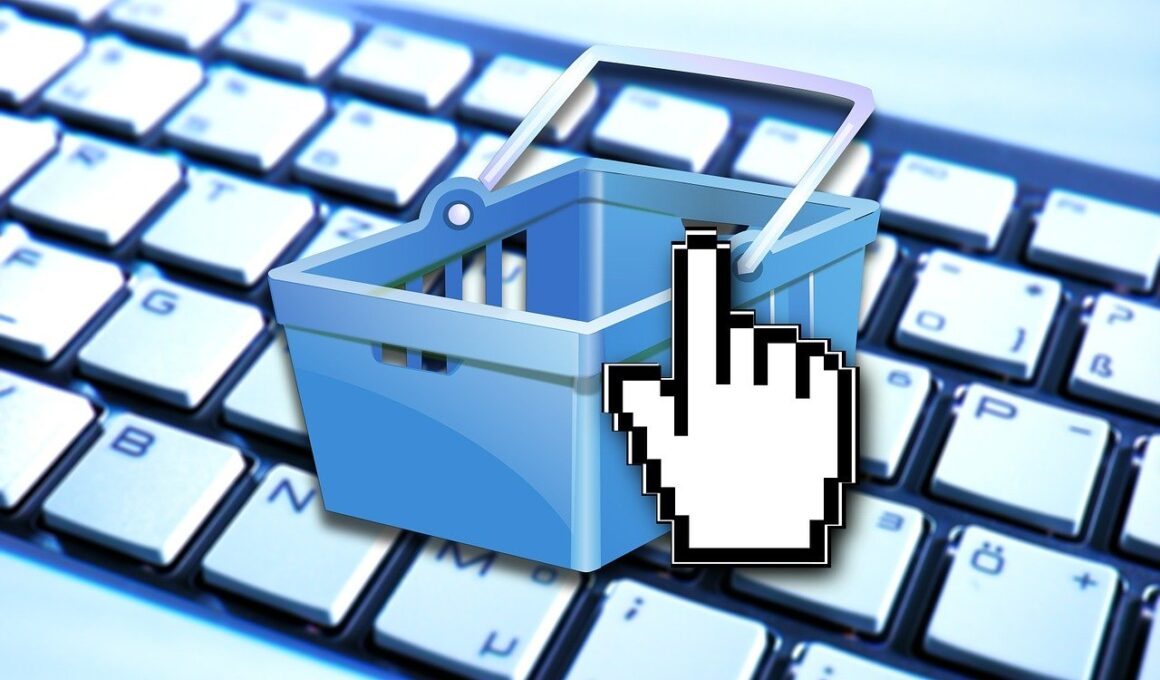Using Data Analytics to Enhance Retail Up-Selling
In the competitive landscape of retail, leveraging data analytics has emerged as a critical strategy for enhancing up-selling initiatives. Retailers can pinpoint customer preferences, shopping habits, and purchasing histories through the analysis of various data sets. The actionable insights derived from this data serve as a roadmap for crafting personalized recommendations that resonate with individual customers. For instance, if a customer frequently purchases audiovisual equipment, targeted suggestions for compatible accessories can be made. By tailoring suggestions, retailers not only enhance the shopping experience but also significantly increase their chances of closing additional sales. Furthermore, data analytics helps identify trends that can influence inventory decisions. Retailers can allocate resources more efficiently by understanding which products sell well together. The ability to access real-time data enables retailers to adjust their marketing tactics quickly and remain responsive to evolving consumer needs. As retail entrepreneurs explore the practical uses of data, they must remember that the integration of human insight with analytical findings often yields the best outcomes in successful up-selling strategies. Overall, blending retail practices with data analytics promotes profitability and customer satisfaction, both vital for long-term success in the retail sector.
Data analytics can significantly enhance the identification and segmentation of target audiences in retail. Retailers can analyze demographic data, purchase behaviors, and preferences to create distinct customer groups. By segmenting their audience, businesses can tailor their marketing strategies and up-selling techniques to meet different needs. For example, a retailer can recognize a group of tech-savvy consumers who are more likely to appreciate the latest gadgets. As a result, they can personalize communications by recommending new products that fit their interests precisely. Additionally, tracking customer interactions over time helps retailers refine their segmentation further. The more data collected, the easier it is to pinpoint the most lucrative segments. Retailers should employ advanced analytics tools to ensure they utilize insights effectively in real-time. Implementing machine learning algorithms can facilitate dynamic adjustments to marketing strategies based on ongoing insights or changing consumer preferences. To maintain relevance and increase effectiveness, manufactures and marketers should regularly revisit their strategies and update segmentation based on new analytics data. By focusing on segmented and personalized up-selling techniques, retailers can maximize their sales potential and foster a loyal customer base, thereby driving long-term business success.
Improving Customer Engagement with Analytics
Improving customer engagement is crucial for success in retail up-selling and can be significantly enhanced using data analytics. Retailers can create personalized marketing messages, tailored promotions, and bespoke recommendations based on individual shopping habits and preferences. For instance, by leveraging customer data through an integrated analytics platform, stores can discern patterns in buying behavior. These insights enable retailers to develop targeted marketing messages that resonate with specific customer needs. Additionally, analyzing data on past purchases allows retailers to anticipate customer demands proactively. As a result, recommended products can be timely and relevant, making the up-selling process feel more organic. Also, integrating different analytics sources, such as social media interactions and customer feedback, enhances understanding of customer sentiment. This comprehensive view enables retailers to assess and adapt their strategies according to customer expectations and preferences. The analytics approach to customer engagement not only helps retailers present more appealing offers but builds trust and loyalty over time. In summary, by employing data analytics intelligently, retailers can transform customer interactions into valuable experiences that enhance up-selling success rates and improve overall satisfaction.
An essential factor in executing successful up-selling strategies is understanding when and how to present additional products to customers effectively. By using predictive analytics, retailers can determine the optimal timing for up-sell suggestions during the customer’s shopping journey. For example, presenting related items at various touchpoints, such as during product pages, checkout, or post-purchase emails, increases the likelihood of additional sales. Predictive analytics leverages existing data to anticipate customer behavior based on similar past transactions. Moreover, by implementing A/B testing, retailers can refine their up-selling techniques further, identifying the most effective strategies for different customer segments. Personalization remains vital—if customers receive recommendations pertinent to their preferences, they are more likely to consider the additional product. Such strategies can also be scaled efficiently. Automating parts of the up-selling process can help retailers maintain consistency and accuracy without overwhelming the staff. Emerging technologies and AI-driven strategies play a crucial role in fine-tuning the up-selling approach by providing continuous insights. Ultimately, understanding the timing and context for presenting up-sell options is key to enhancing conversion rates and driving increased revenue in the retail environment.
Utilizing Customer Feedback for Up-Selling
Collecting and utilizing customer feedback is another effective approach to enhance retail up-selling strategies. Customer opinions become invaluable data sources that help retailers understand their up-selling efforts’ effectiveness. This feedback can be gathered through various means, such as surveys, reviews, and direct interactions, allowing retailers to gauge customer satisfaction regarding product suggestions. Furthermore, insights gleaned from customer interactions can indicate whether certain up-sell products align with consumer expectations. Retailers can adjust their recommendations based on this feedback, fine-tuning their approach for different customer segments. Additionally, reflecting on customer feedback helps identify potential gaps in product offerings, enabling retailers to expand their inventory with items that customers explicitly express interest in. Engaging with customers through feedback also fosters a sense of loyalty, as consumers appreciate being heard and recognized. By incorporating customer insights into data analytics efforts, retailers can improve personalized marketing strategies significantly. This proactive communication reinforces customer trust, making them more receptive to up-selling attempts. Ultimately, valuing and acting on customer feedback can enhance strategies that lead to more substantial sales conversions and improved customer retention.
The integration of omnichannel strategies is a vital consideration for retailers looking to enhance their up-selling methods. In today’s retail environment, consumers often interact with brands through various channels, including online platforms, mobile applications, and traditional stores. By consolidating data across these channels, retailers can create a holistic view of the customer journey. This comprehensive understanding helps identify opportunities for up-selling that may be overlooked if analyzing data from a single channel. For instance, customers expressing interest in a product online may be more inclined to explore related items in-store. Retailers must ensure that their messaging remains consistent across all platforms while personalizing promotions based on customers’ preferences and behaviors. Enhanced personalization leads to increased customer engagement, making them more receptive to up-selling initiatives. By providing seamless omnichannel experiences, retailers facilitate continuity in customer interactions, boosting satisfaction. Furthermore, this cohesive customer engagement increases brand trust, making customers less likely to turn toward competitors. Overall, integrating omnichannel strategies within data analytics processes significantly contributes to more effective up-selling efforts, driving both sales growth and improved customer relationships.
Conclusion
In conclusion, utilizing data analytics in retail up-selling isn’t just a trend; it has become an essential component of a successful retail strategy. By harnessing the power of data, retailers can gain vital insights into customer behavior, preferences, and shopping patterns that inform effective up-selling techniques. From personalized marketing strategies to enhanced customer engagement, the integration of data analytics leads to opportunities for significant improvements in sales performance. Retailers must embrace the insights offered by data and adjust their approaches to meet the evolving demands of consumers. By actively utilizing customer feedback and implementing omnichannel strategies, businesses can create a streamlined and targeted up-selling experience that resonates with customers. Furthermore, predictive analytics can help identify the right products to showcase to customers at precisely the moment they are most likely to purchase. Retailers willing to invest in data analytics will find themselves better positioned to navigate the complexities of modern retail while capitalizing on potential sales opportunities. In a landscape saturated with competition, a strategic approach to up-selling powered by data analytics can be the differentiating factor that drives retail success.
In summary, applying data analytics in retail up-selling helps businesses significantly elevate their sales strategies and customer experiences. By recognizing the need for personalized approaches and continuously adjusting methods based on real-time insights, retailers can maintain a competitive edge in the marketplace. As analytics technology evolves, retailers should keep exploring innovative solutions that will enhance their up-selling capabilities. Additionally, companies can benefit by fostering an organizational culture that values data-driven decision-making and customer-centric practices. By closely monitoring customer preferences and adapting to new trends, businesses unlock the potential for sustainable growth and customer loyalty. The comprehensive integration of data analytics into retail strategies allows for an increased understanding of consumer needs and behaviors. As such, retail up-selling transforms from a simple sales technique into a holistic strategy that improves the customer experience. Ultimately, retailers willing to invest in and leverage data analytics will not only elevate their up-selling game but also position themselves for future success in a rapidly changing industry.





